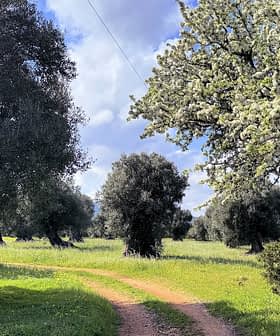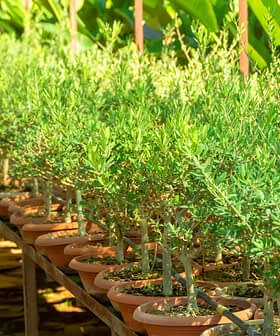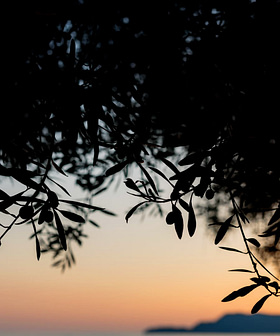Beetle Could Pose New Threat to Olive Trees
Researchers have discovered that olive trees are the only non-ash species of tree vulnerable to attack from the invasive Emerald Ash Borer beetle with potentially devastating consequences.
A team of researchers from Ohio’s Wright State University has discovered that the invasive Emerald Ash Borer (EAB) is capable of completing development on olive trees, making it the second official non-ash species of plant that can host the insect. While EAB previously only posed a threat to forests and landscapes, this latest discovery reveals that it could have negative consequences for olive trees should an invasion occur.
Research into EAB’s ability to make a home out of the cultivated olive (or Olea europaea) was led by Don Cipollini, professor of plant physiology and chemical ecology at Wright State University.
The findings were published in the Journal of Economic Entomology. It builds off previous studies first initiated in 2014, where the team explored its attacks on white fringetree (Chionanthus virginicus), which is a relative of the ash tree.
Cultivated olive trees are a close relative of the white fringetree and are known to grow in areas where susceptible ash trees have been cultivated and grown. In initial studies, tests were done on the tree using EAB eggs sourced from insects with no previous exposure to either olive or white fringetree in order to reveal the true innate potential of the EAB to use alternative hosts without having an adaptive advantage.
The current study involved the researchers using the Manzanilla cultivar of olive and placing eggs directly on cut stems. It was discovered that larvae were capable of feeding and growing to adulthood on the tree, although not at the same level as that seen on most North American ash trees or white fringetree.
The findings revealed that the potential host range of EAB is broader than previously thought and if the insect can detect and utilize olive trees, it could make the leap to become a pest of the crop. As olive trees are already vulnerable to several pathogens and insects, it could make them more vulnerable to EAB. This would make its potential spread and persistence more likely.
According to Cipollini, the outcomes of the EAB becoming a pest of the olive tree would require serious action from all involved parties. “If the EAB can detect and utilize olive trees in the field, then it could have negative consequences on growth and productivity of olive trees. Treatment and management protocols will need to be established for it,” he said.
“If the EAB will not attack olives in the absence of any ash trees in the area, then the removal of ash trees becomes part of a management strategy. Olives are treated chemically for some pests. If they will need a separate pesticide treatment for EAB then many of the systemic pesticides used for EAB on ash trees would be off the table, and other non-systemic treatments will have to be optimized. If olives can indeed serve as a host in the field, there would also be important regulatory implications.”
Cipollini said his team is currently repeating the study with several other cultivars. They are also exploring the adult EAB’s attraction and willingness to lay eggs on olive trees, the larval use of the phloem tissue and tree defenses to it and whether or not the EAB can complete their sexual maturation feeding exclusively on olive leaves.
However, he stressed that genetic and environmental influences could affect the vulnerability of the olive tree to the EAB and that further testing on the interactions between the EAB and commercially grown olives were needed.








